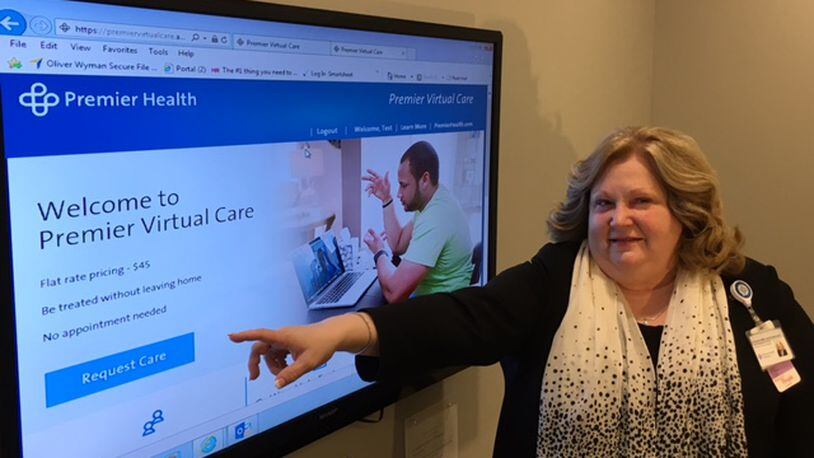RELATED: Local patients can get diagnosed without visiting doctor
The service is available to anyone, 24 hours a day, seven days a week for a flat fee of $45, although insurance coverage is not accepted, according to Dr. Kathleen Forbes, chief integration officer at Premier, who said the hospital launched the service late last month.
“It’s certainly consistent with what we’re trying to do to meet the needs of the patients and consumers in our market, and that is to achieve care at convenient and accessible points of care,” Forbes said.
The debut of Premier Virtual Care followed Premier’s introduction in February of Premier HealthNet, another service that allows patients to be diagnosed and treated by a doctor by remote.
RELATED: Premier Physician Network adds practice
But Premier HealthNet, which utilizes patients’ online MyChart portals to send and receive messages, is for patients and their primary care providers only and is limited to diagnosing and treating about a dozen non-emergent conditions, such as pink eye and poison ivy.
Premier Virtual Care is for any condition that could be treated in an urgent care facility.
RELATED: Virtual doctor visits growing in region
Premier — a $2 billion health system with hundreds of primary care practices — has introduced more virtual health options in response to the growing demand for telehealth services, which are increasingly covered by group and individual insurance plans.
A 2016 survey by the American Telemedicine Association found that 22 percent of respondents had already begun using video conferencing to speak with a health care provider.
“I don’t think the office visit will ever go away,” Forbes said. “This is just adding a layer of support to that.”
About the Author
